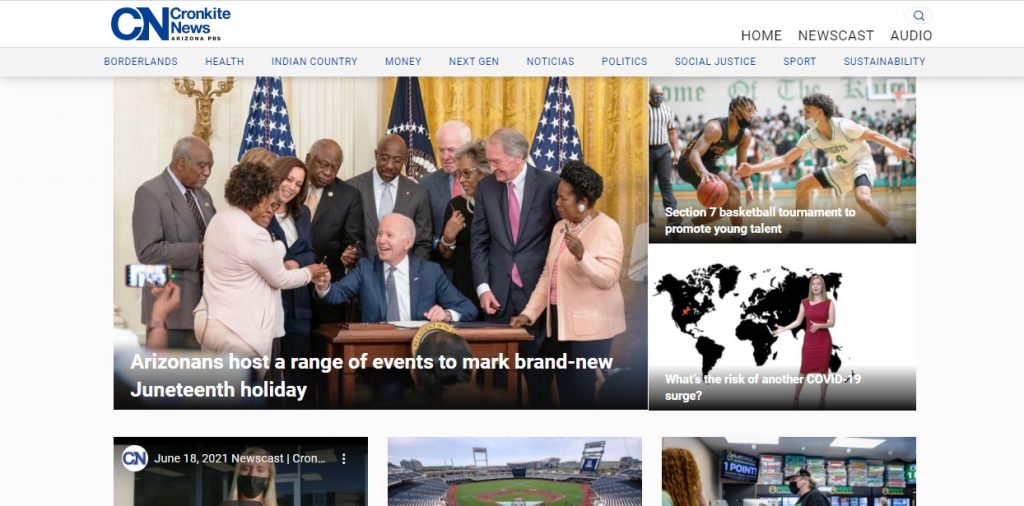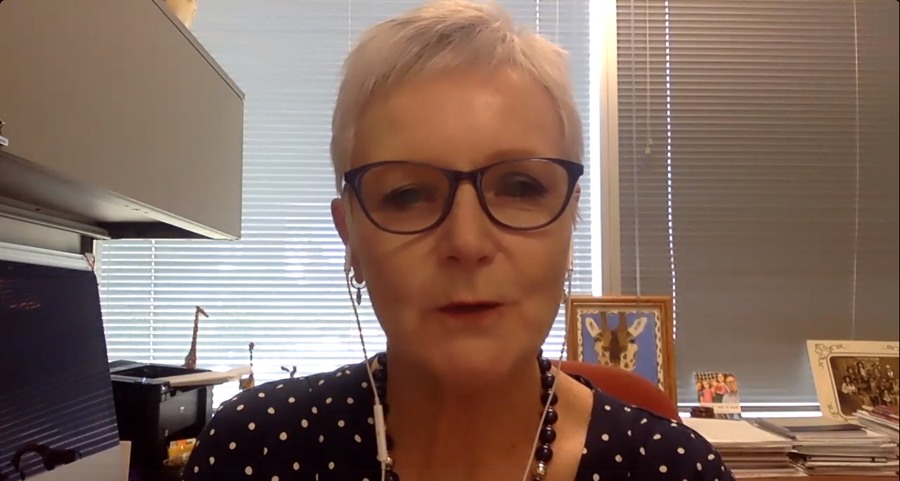It was day five at the 2021 Study of the U.S. Institute on Journalism, Technology, and Democracy hosted by the Walter Cronkite School at Arizona State University, for a cohort of 18 participants from across the world. The thrill of the virtual component continued with experiences on the power of imagination and adaptation for us all as we were exposed to an inventive pedagogical experience called “The Teaching Hospital Model.” The discussion, hosted by Marianne Barrett, journalism professor and former Senior Associate Dean of the Cronkite School, with a group of faculty, administrators, and students from Cronkite did indeed inspire us all. We had earlier watched a recorded sharing session on how Cronkite handled remote learning and instruction with COVID-19’s intrusion. This unveiled how the power of digital technology in education can coalesce with futuristic thinking to make uncertainties like the ones occasioned by the pandemic to become a “blessing in disguise.”

What is the ‘Teaching Hospital Model’?
This approach is an adaptation of how medical students are trained. In the first couple of years, the model allows students at Cronkite to gather fundamental hands-on knowledge, take courses, and engage in practices to prepare for ethics and principles. Skills classes follow for three semesters, and in the second and third years, it is career specialization, choosing professional programs, and preparing for specific jobs, and the demonstration of essential skills and experiences. The interesting part is that each program has specific prerequisite courses. “So, Sports Journalism students take sports reporting; Digital Audience Lab students take audience classes,” explained Rebecca Blatt, who joined Cronkite from public broadcasting and is now Senior Associate Dean in charge of professional program design. “And there is a portion of that early curriculum that everybody doe,s and a portion where students branch off and prepare themselves for a different professional career.” These engagements, we learned, are used to build student expertise and confidence, and Paula Boivin, who is in charge of the sports journalism program, confirms that students at Cronkite truly “get real-world experience” by covering live sporting events, interviewing professionals, and dealing with nuances. Similarly, Christina Leonard, who directs the Cronkite News broadcast, added that what they do is “try to offer solutions,” but students are at “liberty to experiment using storytelling techniques, platforms, and collaborations because it gives them exposure” and, I must add, visibility too.

The ‘mixes’
The curriculum at ASU Cronkite is designed and implemented by faculty members with vast industry experience and academic backgrounds, who ensure that it is a mix of skills and conceptual knowledge, explained Marianne Barrett, Cronkite’s former Senior Associate Dean. There is also the honing of multiple talents which the school encourages students to adopt through enrollment in multiple professional programs. So, over time, students build a variety of skills and expertise, qualifications, and experiences and are able to explore different options. Students Colin Romaglia (undergraduate student worker) and Mary Long (PR Lab team lead) bear testimonies of incredible experiences during the degree program at Cronkite, despite the pandemic–which incidentally exposed the educational divide in my country, Nigeria, where lack of access to digital tools resulted in education and learning disruptions and exclusion. The federal government activated an education coordinated response strategy and a handful of universities introduced online learning, while others shut down and waited due to basic issues like electricity interruptions, low access to digital technologies and resources, and low digital competencies. These are barriers to the adoption of technology for effective learning experiences.
Adaptations and challenges
The Cronkite School experiment was a relishing experiential learning process to us all, and drawing from our national peculiarities, some of us inquired about challenges related to student access to cover real events and response towards practical situations. One participant mentioned that at his university, most students just want to “produce” and are uninterested in research. At Cronkite, since some specific courses require field practice, the students are categorized as staff. This contrasts with what occurs in some of our countries where journalism field practice for students is threatened by their status as trainees, except for student-journalism practitioners who seek additional journalism training. In relation to COVID-19, there were challenges at Cronkite, as well. Mary Long, a student who is also a team lead in the PR Lab, said that with the pandemic’s incursion, it was challenging to adjust to duty calls, engage in online brainstorming sessions with students and colleagues, and find creative ways to stay connected. What came as a surprise to most of us was that online gaming came to the rescue and created interactive connections. Presently, Cronkite has more online than physical degree-seeking students.
Takeaways
I agree that it is impossible to prepare for everything, but the faculty at Cronkite succeeded because they prepared to deliver effective remote teaching and learning. I will remember that Cronkite Associate Dean,Jessica Pucci said that “it’s not perfect yet,” although many years before the pandemic, the School ran robust asynchronous degree programs for online and on-campus students. “We took the entire course schedule and created modules for faculty to learn how to deliver synchronous lessons, and coached instructors and students on how to have best possible experiences. We set up logistics to have real conversations and not lose out the connectivity between student and professor,” added Pucci, who led Cronkite’s remote learning program when COVID hit. These takeaways will remain indelible to our SUSIs cohort experience.
Interestingly, at the Department of Mass Communication, University of Maiduguri, we have a campus radio for teaching/learning, and students are assigned to cover beats on a rotating daily schedule. They also produce and present live programs, serve as interns from the first to the fourth year at the radio station, while the TV component is studio-based because we are yet to obtain a broadcast license. The students also go for six weeks of internship in their second and third years, respectively. Also, in the third year, they must publish in a national newspaper for a course on features or fail. As the session went on, I brainstormed on how or whether we could also lean towards the Cronkite Teaching Hospital Model, and I could observe that my cohort was also listening with keen interest. I know that replicating Cronkite’s amazing effective learning experience would be unsettling due to some of the earlier mentioned basic requirements towards adapting technology for pedagogy. But I know that it is not impossible, and I believe that if all of us in the 2021 SUSIs cohort will take some steps, even if they are baby steps, we can make it work.
